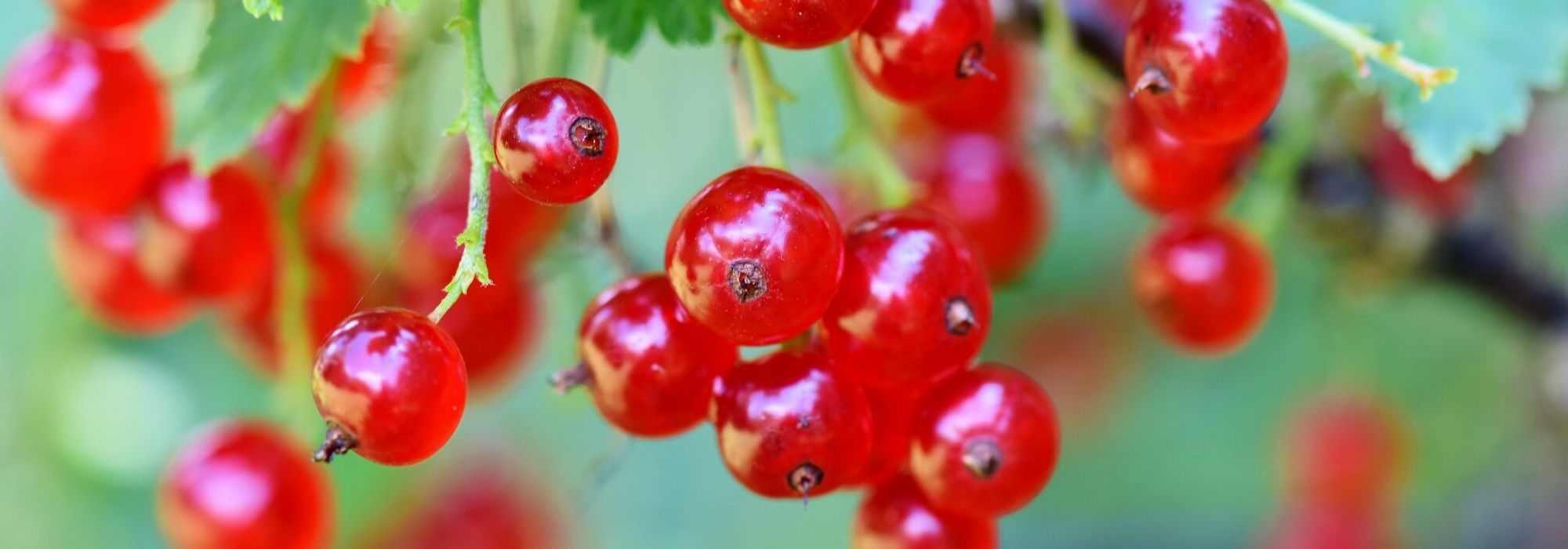
Currant bush: planting, pruning and care
Contents
Currant bush, in a nutshell
- Currant bushes are deciduous bushes bearing small fruits, currants, and are close cousins of blackcurrant bushes.
- They are very hardy and long-lived.
- There are cluster currant bushes producing in July pendulous clusters of small tangy berries, red, pink or white; currant-grape varieties, more productive, to harvest in August; and gooseberry bushes which bear large reddish or greenish berries, fairly sweet-flavoured in July.
- Plant them in cool, slightly acidic soil rich in organic matter.
A word from our expert
Currant bushes grow wild in many temperate regions of the Northern Hemisphere, from Europe to Siberia, as far as Manchuria and in North Africa. The plant has been cultivated since the 16th century throughout France except in Mediterranean region and Corsica, as it prefers cool climates. Two main categories of currants are grown, cluster currants, without thorns which produce small translucent tangy berries that are pale red, pink or white, and gooseberry bushes, which bear thorns and produce large solitary berries, round to ovate, downy and sweeter in flavour.
You can form medium hedges that are both decorative and productive of around 1.3 to 1.5 m high. A currant plantation is usually productive for over 12–15 years if you take care to prune the bush regularly.
Very hardy currants thrive in a cool environment and, depending on variety, require severe winters to fruit well (several hundred hours of slightly negative or slightly positive temperatures, accumulated per winter but not consecutive, are necessary). Make regular applications of compost or organic fertiliser in autumn or spring to maintain high levels of potash and nitrogen. Mulching is recommended both to retain soil coolness (compost, BRF or other), enrich it and limit weeds, and to water in case of prolonged drought. These bushes are indeed sensitive to lack of water because of shallow rooting and require a semi-shaded exposure in southern regions.
Description and botany
Botanical data
- Latin name Ribes rubrum, uva-crispi
- Family Grossulariaceae
- Common name Redcurrant bush, Grape currant, Gooseberry bush
- Flowering April to May
- Height between 0.50 and 1.60 m
- Exposure non-scorching sun or partial shade
- Soil type any loose soil, cool and well-drained, not too calcareous
- Hardiness Excellent (-25 °C)
Currant bushes belong to genus Ribes, which comprises some 200 species in family Grossulariaceae. This family is sometimes considered to include genera Itea, Escallonia and Ribes (ITIS, 27/04/2010) or Grossularia and Ribes (DELTA Angio, 27/04/2010). Ribes occupy temperate regions of northern hemisphere, as well as mountains of Central and South America down to Patagonia.
Redcurrant bushes bear scientific name Ribes rubrum, a specific name meaning “red” in Latin, or Ribes vulgare “common”, while blackcurrant is Ribes nigrum, “black” because of fruit colour. Species rubrum also includes category of Grape currants, later-ripening, harvested 5–15 August and bearing long peduncles that are easier to pick. Gooseberry bush derives from another species, Ribes uva-crispa (also called Ribes grossularia). This Caucasian and Ukrainian species was brought to France in Middle Ages by Normans and Danes. It prefers humid summers and harsh winters, which explains wide cultivation in Netherlands, Germany and Great Britain.
Jostaberry or jostaberry hybrid (Ribes x nidigrolaria) is a fruiting bush producing blue-black fruit, obtained by cross-breeding between blackcurrant and currant. Other Ribes species, called flowering currants, are grown for ornament such as Ribes sanguineum, one of earliest bushes to flower in spring with generous clusters of pink flowers, or Ribes odoratum with yellow, scented flowers and very aromatic foliage reminiscent of clove. Alpine currant (Ribes alpinum), which produces large scarlet berries, is dioecious and therefore requires proximity of a male plant to fruit, but it is often the male that is planted for its very decorative greenish flowering in spring. Shining berries and foliage of Ribes, which generally turns attractive golden hues in autumn when climate suits, make this bush both productive and ornamental, easy to integrate into even a modest garden.
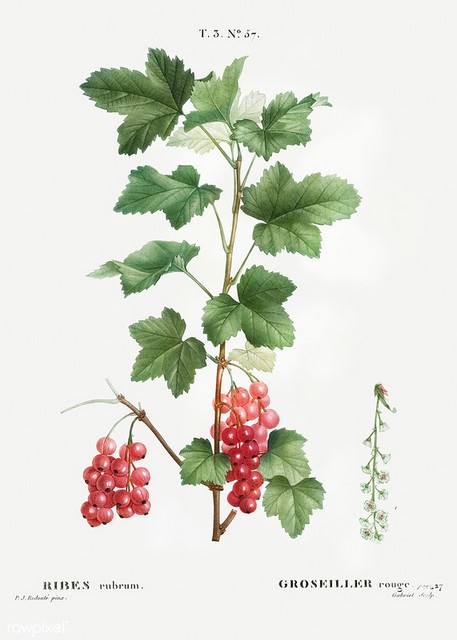
Ribes rubrum – botanical illustration by P.J. Redouté
Gooseberry bushes form low bushes (50 cm to 1.20 m) very ramified with thin shoots while redcurrant bushes produce long, sparsely ramified stems of soft wood with abundant pith. Tuft reaches 1 m diameter and 1.20–1.60 m height. Grape currant forms a more vigorous bush than redcurrant and yields more per plant, around 8–10 kg on a 1.60 m trained plant, versus 5–6 kg for redcurrant. Fragility of its shoots often requires training.
Leaves of Ribes rubrum are simple, with lamina medium green, 10–12 cm wide, with 3–5 crenate lobes, glabrous above and slightly pubescent beneath. They are quite similar to blackcurrant leaves but absence of scent when leaves are rubbed allows identification as a currant rather than a blackcurrant. Leaves of gooseberry bush, slightly pubescent and often rather bright green, are much smaller, 6–7 cm wide, with 3 main lobes flanked by 2 smaller basal lobes. Prickles of gooseberry bush occur solitary or fasciculate in 2s or 3s on stems, although inermous varieties exist.
Fruiting of currants occurs mainly on twigs or buds (May clusters, spurs) positioned on shoots aged 2–3 years. Gooseberry flowering occurs as solitary flowers or in pairs/triples, whereas redcurrant bears long clusters of 10–20 flowers. In both cases, small flowers, whitish-green, brownish or even pinkish, are quite inconspicuous but very melliferous. Corollas consist of 4–5 petals shorter than 4–5 sepals forming calyx. Centre occupied by 4–5 stamens and a pistil with an inferior ovary. Currants are more self-fertile than blackcurrants, but planting 2–3 varieties is nonetheless recommended to improve yields as well as flavour and aroma of jellies!
After fertilisation, carpel develops into a berry containing several pips and bearing dried remains of calyx at its summit. Harvest takes place between late June and mid-August depending on variety. In gooseberry, juicy, translucent berry, solitary or grouped in 2s or 3s, is round or ovate, 1–1.5 cm diameter, with hairy or glabrous skin. Colour ranges from yellowish-green to purplish red with a sweeter flavour than redcurrants. In redcurrant, berries measure 0.5–1 cm, with more or less dense clusters depending on variety, offering various shades of red (pink, scarlet, deep red) or white as in Versaillaise Blanche. Different aromas and sweet-tart flavours characterise each currant variety.

Red and white redcurrants, gooseberries and jostaberries
Currant fruit is low in sugar and therefore low in calories while offering interesting content of vitamins C, A and B, as well as minerals such as calcium, iron, potassium and phosphorus and trace elements. Fibre-rich fruit is purifying for body thanks to diuretic, digestive, liver-decongesting and laxative properties, provided eaten barely ripe.
Read also
Planting young fruitsMain currant varieties

Redcurrant Rola - Ribes rubrum
- Flowering time May
- Height at maturity 1,30 m

Pinkcurrant Gloire de Sablons - Ribes rubrum
- Flowering time May
- Height at maturity 1,30 m
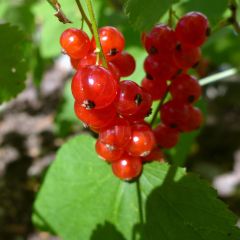
Ribes rubrum Jonkheer van Tets - Redcurrant
- Flowering time May
- Height at maturity 1,50 m
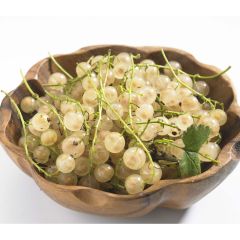
White Currant Cerise Blanche - Georges Delbard
- Flowering time May
- Height at maturity 1,50 m

Gooseberry Bush Winham's Industry - Ribes uva-crispa
- Flowering time June
- Height at maturity 1 m
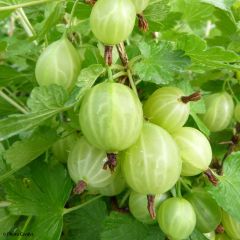
Gooseberry Easycrisp Lady Sun - Ribes uva-crispa
- Flowering time June
- Height at maturity 1 m
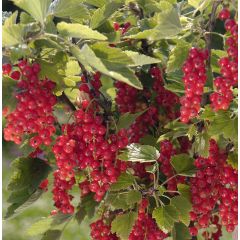
Redcurrant Mactor - Georges Delbard
- Flowering time May
- Height at maturity 1,20 m
Discover other Redcurrant bush
View all →Available in 0 sizes
Available in 1 sizes
Available in 3 sizes
Available in 1 sizes
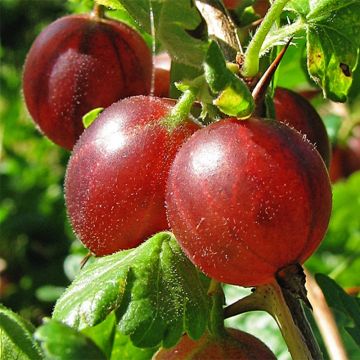
Available in 1 sizes
Available in 1 sizes
Available in 1 sizes
Available in 2 sizes
Available in 1 sizes
Available in 1 sizes
Planting currant bushes
Where to plant?
Currant forms a very hardy bush, tolerating down to -25 °C and well suited to north of Loire or mid-mountain areas. It is however sensitive to persistent spring frosts between 1 and 5 °C, which can cause fruit drop due to poor fertilisation. In southern regions, plant in partial shade in a cool spot rather than in full sun.
It tolerates clay soils that are adequately drained but prefers a humus-bearing soil not too calcareous and deep and cool in summer.
Choose a position with indirect sun or partial shade, sheltered from strong winds because currant dislikes heat and drought.
If possible alternate several varieties of currant to encourage pollination even for self-fertile varieties. Allow one pollinator for every four plants.
When to plant?
Planting is recommended between October and March when foliage is absent, avoiding frosty periods.
How to plant?
This plant is easy to grow in cool conditions sheltered from wind and scorching sun. Allow spacing of 1.20 m if forming a hedge (2.50 m between rows for an orchard). The Jostaberry (Groseille-Raisin) forms a bush as vigorous as blackcurrant; allow 1.80 m spacing within the row or train the plant against a support.
- Immerse rootball of a container-grown plant in a bucket of water to moisten thoroughly or, if dealing with a bare-root plant, trim damaged roots cleanly then coat them with pralin or, if unavailable, with mud.
- Using a spade, dig a hole about 30 cm in every direction, taking care not to smooth the sides.
- Work the soil, removing stones and unwanted weeds,
- Add a generous amount of well-rotted organic matter (potting compost, garden compost…). In poor soil, add horn meal (rich in nitrogen) and a base fertiliser (rich in phosphorous and potassium). If soil is calcareous, add turf and then apply an acid mulch (needles or pine bark…).
- Bury the collar 5 cm deep to encourage new shoots, then refill and form a watering basin.
- Give 5–10 litres of water per plant depending on size.
- Cut the clump back to 2–3 buds if this was not done at the nursery.
→ *Learn more in our article Planting currants bare-root.
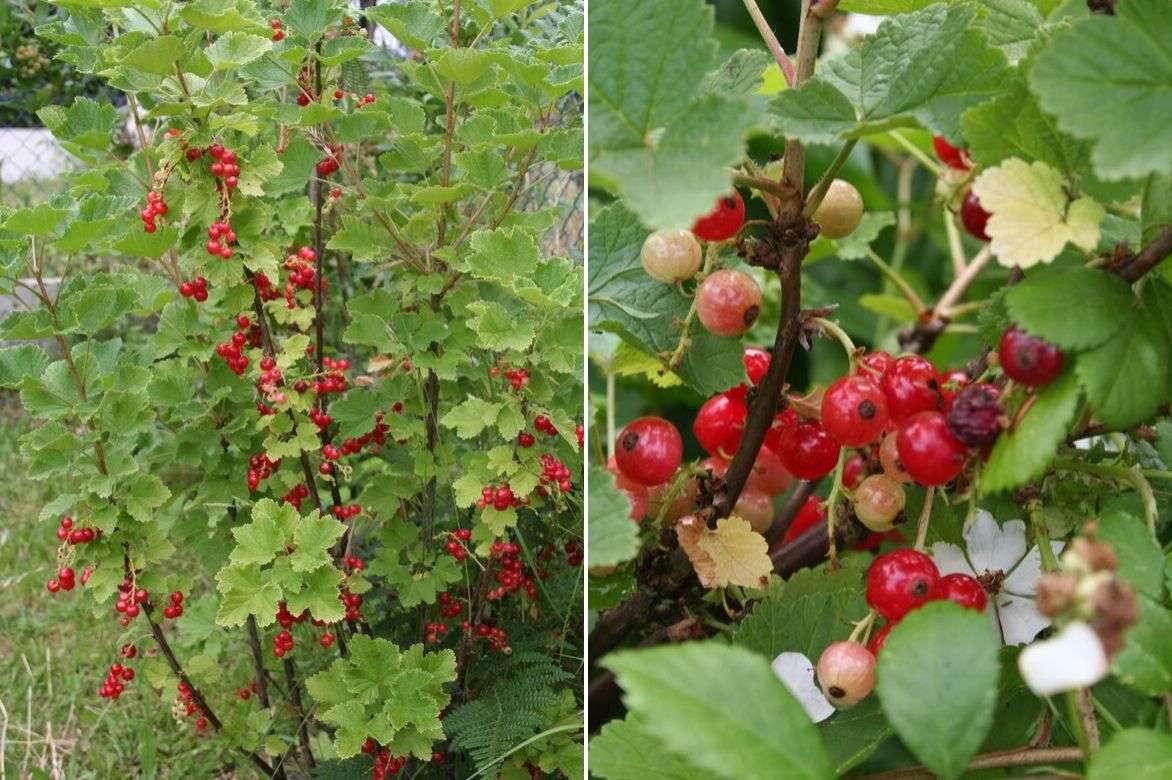
Redcurrant bush
In a pot: place at bottom of a pot at least 40 cm deep a layer of gravel or clay pebbles to aid drainage. Fill pot with a mix of potting compost, garden soil and compost. Set the rootball in place, burying the collar slightly.
Read also
5 red berries for beginnersCare, pruning and potential diseases
- Apply an organic fertiliser at start of each spring.
- Keep soil cool to prevent rust, with regular watering especially in spring.
- Low temperatures between 1 and 5°C affect fertilization of flowers at flowering time in April and can greatly reduce harvest. If necessary, install a horticultural fleece during cool nights, taking care not to hinder pollinators during daytime.
- Place a water dish for birds rather than a protective net before fruits redden.
- In autumn, remove dry or spotted leaves.
Diseases and pests of currant bush
This accommodating bush is not very susceptible to diseases but can be affected by aphids, mealybugs and mites, whose overwintering forms should be destroyed by a winter treatment. Note that green or red swellings often seen on currant leaves are caused by yellow‑orange aphids Cryptomyzus ribis sheltered on underside of the lamina. Remove leaves and burn them. Clearwing causes drying of currant shoots between June and October. This white caterpillar is eliminated by cutting out and burning hollowed shoots. If orange pustules cover underside of leaves, spray a fungicidal treatment against rust, for example horsetail decoction. Be aware that five‑needle pines such as the Weymouth pine placed within 1 km and sedges (Carex) can transmit this disease. Anthracnose is a fungal disease showing angular, pale spots rimmed with reddish‑brown associated with premature leaf fall in June–July or even drying of clusters. Collect and burn fallen leaves, apply a copper fungicidal at end of flowering, 15 days later and a third time after harvest. During growth, treat for powdery mildew (or “White”) as soon as a greyish coating appears on leaves, because this fungus is a formidable enemy especially of gooseberry bushes which are also prone to Grey mould, a related fungal disease (leaves and fruits covered with a whitish down turning brown), which can simply destroy the crop. Remove and burn diseased parts, treat with sulphur at start of next season’s growth.
Abnormally swollen buds that dry out or produce plicate leaves indicate an attack by currant bud mite, capable of transmitting blackcurrant reversion virus, which is incurable. Remove affected buds and burn them. Uproot young plant if too weakened.
If hungry birds attack buds in winter, offer them seeds.
Pruning currant bushes
Aim to obtain and then maintain about a dozen productive shoots per bush. To do this :
- Cut stems back to 2–3 buds in year of planting.
- Renewal of oldest shoots (5–6 years) begins after 3 years and continues for more than 15 years for optimal production.
- Apart from gooseberry, you can also cut back current‑year shoots (with pale bark) by two‑thirds of their length (one‑third only for blackcurrants and jostaberries).
For more information, see this fact sheet: Pruning currant bushes and blackcurrants and Pruning currant bushes: when and how to prune successfully?
Harvest and storage
Harvesting gooseberries
- Fruits should be harvested fully ripe, when they detach easily from the cluster or shoot. Yield is about 3–4 kg per plant for the gooseberry bush, 3 kg for the redcurrant bush, and 8–10 kg from the gooseberry‑raisin.
- Gooseberries are enjoyed freshly picked or used in sweet preparations (tarts, jams, jellies…) or savoury dishes (to accompany meats, fish…). Traditionally in Nordic countries, juice from gooseberries was used in a sweet-and-sour sauce served with mackerel dishes (hence the origin of the bush’s name).
Pour récolter vos groseilles, en pratique :
- In the morning or late afternoon, when it is not raining, comb clusters or berries into a basket lined with a tea towel and place them quickly in a cool place.
- Rinse them briefly under fresh water before eating, freezing (spread out well on a tray) or processing.
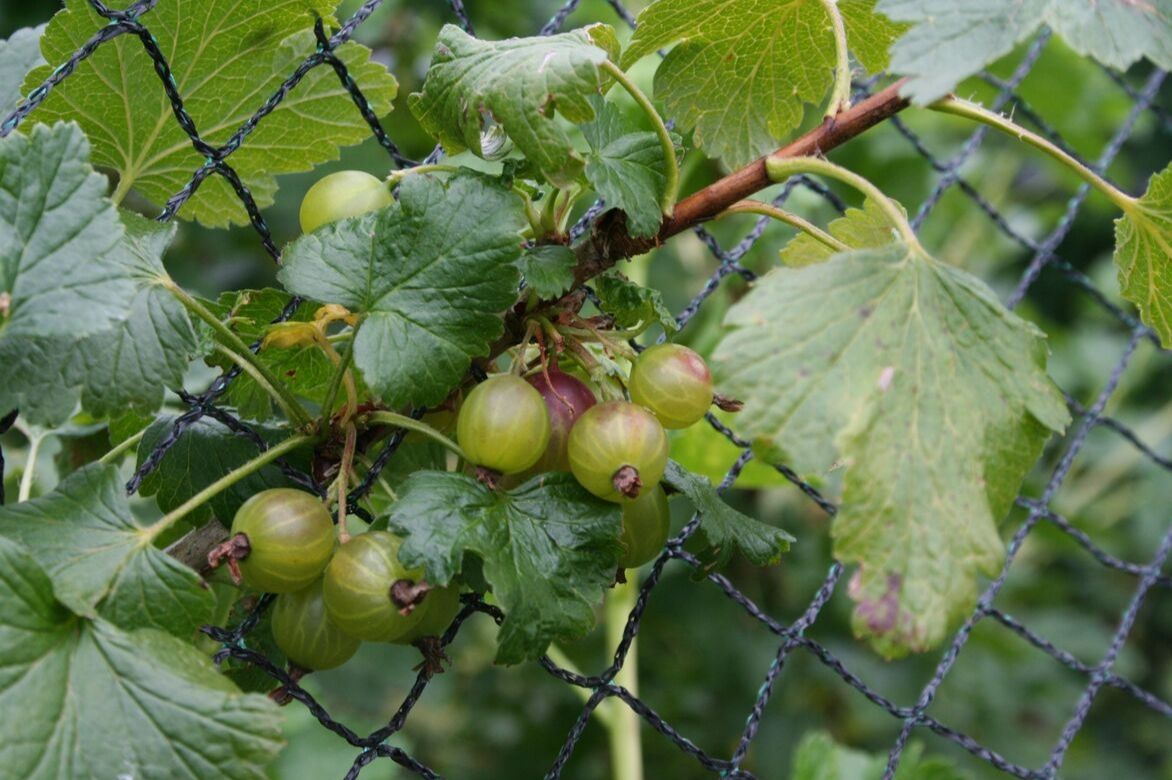
Gooseberry bush protected by a net
Storing gooseberries
- Gooseberries can be kept in the fridge’s vegetable drawer for up to 1 week. They are then eaten in salads, used to decorate cakes or ice cream. They can be paired with meats such as beef or game or used to make muffins, tarts…
- Processing into jams, jellies, juices, coulis, ice cream or syrups is of course essential.
→ Find the recipe for gooseberry jam and jelly in our tutorial !
Multiplication
Propagation by cuttings is carried out from late August to October or in March.
Currant propagation by cuttings
- Take cuttings about 20 cm long from semi-ripe or ripe shoots depending on season chosen, each with at least 4 buds.
- Place cuttings directly in final position in groups of three or in a small trench, in light, cool soil and in partial shade. Leave only 2 buds exposed.
- Keep soil cool and moist during summer.
- If necessary, transplant rooted young plants after one year.
→ Find out more about currant propagation in our care sheet, and about gooseberry propagation in Ingrid’s tutorial !
Uses and companion plants
Don’t hesitate to replace a classic box hedge with a small edible hedge to surround the vegetable garden by mixing different species of redcurrant bushes, blackcurrant bushes and raspberry canes. Redcurrant also makes a fine presence within a bed of flowering bushes or at the back of a bed of perennials composed of Coreopsis, Rudbeckias or hardy geraniums. This bush, modest for much of the year, comes into its own when laden with its long blood-red clusters in which summer light plays. Pleasure is twofold, both visual and gustatory.
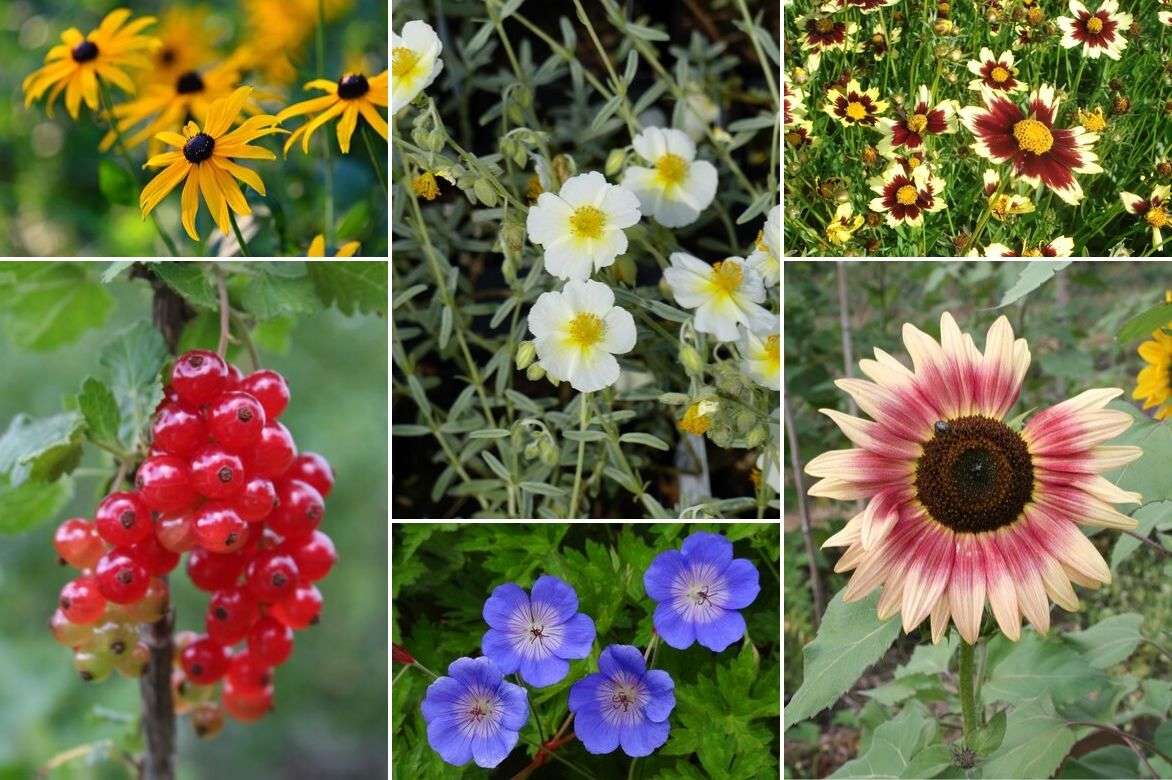
An example of a combination within a bed in well-drained soil: Redcurrant with Rudbeckias such as ‘Early Bird Gold’, Helianthemum ‘The Bride’, hardy geraniums ‘Rozanne’, Coreopsis ‘Cosmic Eye’ and Sunflowers
In the garden, the gooseberry bush can also form a very dense defensive hedge, thanks to its many thorns, which must be watched for during harvest.
You can also pair your currants with fruit-bearing bushes that birds will rush to enjoy, such as Leycesteria formosa, Callicarpa, Nandina domestica and its varieties, Japanese quince, small-leaved Cotoneaster, Hypericum ‘Magical Beauty’, snowberries…
For small gardens, or to save space, it’s clever to train the clustered currant as a standard or even to espalier it against a wall, notably the grape-currant, which is very productive. Note that the currant can easily be grown on a terrace, as it performs fairly well in large pots, from about forty centimetres depth, taking care not to water it with water that is too hard and not to plant it with other plants.
To learn more
Discover:
- Our range of redcurrant bushes: over 20 varieties for your garden as well as our 2025 small-fruit novelties
- Advice sheet: 5 red berries for beginners
- Advice sheet: Choosing the right redcurrant bush: buying guide
- Advice sheet: Planting redcurrant bushes as naked roots
- Tutorial: How to make redcurrant syrup
- Learn more with Pascale on the blog: Growing superfruits is possible
- All about the gooseberry bush: how to choose the right gooseberry bush ; the gooseberry training in our video and Growing the gooseberry bush: when, where and how?
- Subscribe!
- Contents
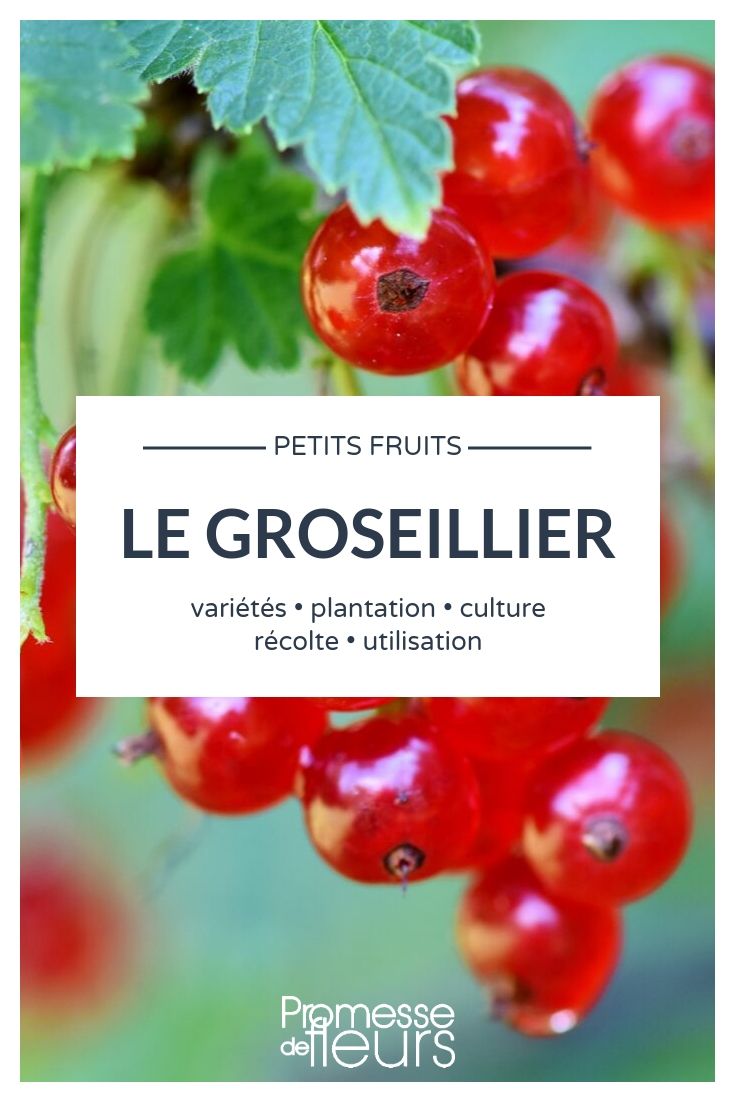































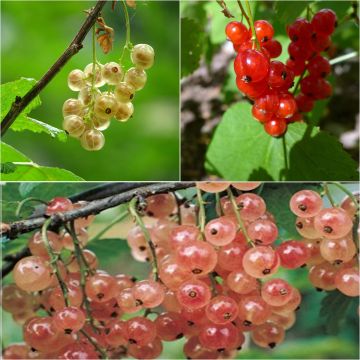
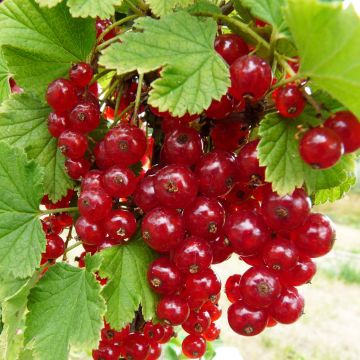

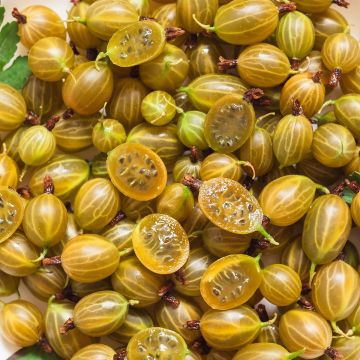
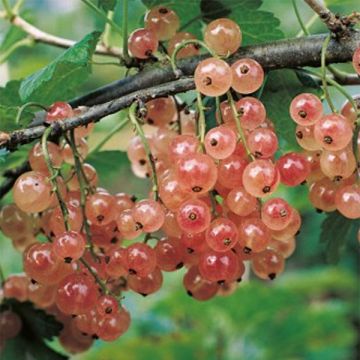
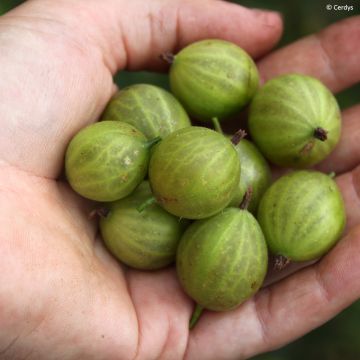
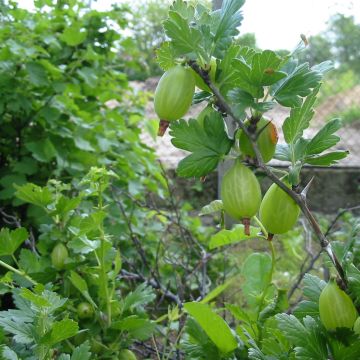
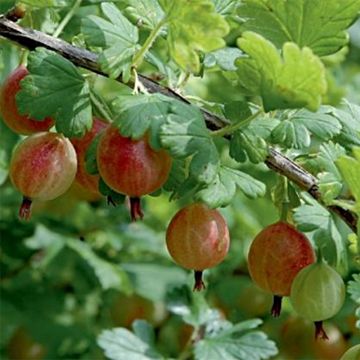
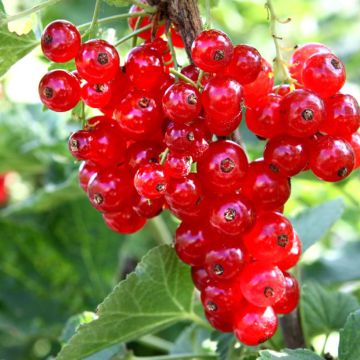
Comments